- Types Of Chimneys In A Modular Kitchen | What Are The Benefits Of Kitchen Chimneys?
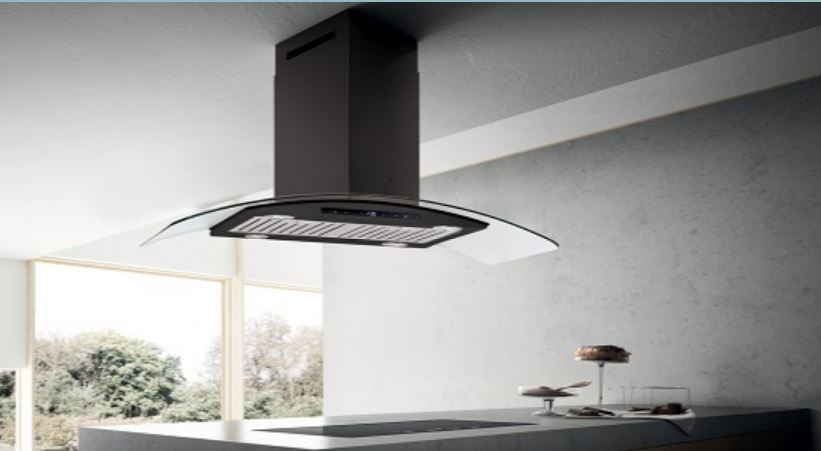
The food tastes best when it is prepared with passion and pleasure. A tranquil atmosphere within the modular kitchen inspires that kind of passion in a person. One must be able to work in the kitchen without facing many challenges.
What are the factors that may suffocate this love for preparing good food?
Cooking as a process involves the conjuring of fumes, oil particles, spices, and different types of smells. Intense smoke inside the kitchen can lead to symptoms like coughing, choking, watering eyes, and running nose. And it is impossible to stop the emission of these irritants when specific additives such as mustard, jeera, chile, or oil are used. Imagine trying to cook a tasty pulao while coughing every three minutes or smelling spicy stuff that triggers a runny nose or a burning feeling. If one does not enjoy the cooking process, it is reflected in their food because it may lack particular ingredients or look shabby.
What if you could enjoy the aroma of a pulao without worrying about these irritants?
That is what a kitchen chimney contributes to and is a necessity in every modular kitchen.
Please go through this article to learn more about kitchen chimneys and their importance in modular kitchens.
1. What is a kitchen chimney?
A kitchen chimney is a ventilation structure or appliance installed above the countertop. It works on the principle that hot air is denser than cold air. The movement of air goes up when the temperature increases. One must have seen the traditional chimneys built directly over the fireplace, where the smoke passes through the duct and leaves the house
The kitchen chimney sucks in the hot air, which contains smoke, fumes, and oil particles, all released during the cooking process. The smooth air movement through the chimney is supported by the fact that the kitchen air is warmer than the outside air.
Electric chimneys are used in modular kitchens.
2. How does an electric chimney work?
Unlike the traditional chimney, where a duct carries out irritants, an electric chimney sucks in everything and is placed right above the cooktop.
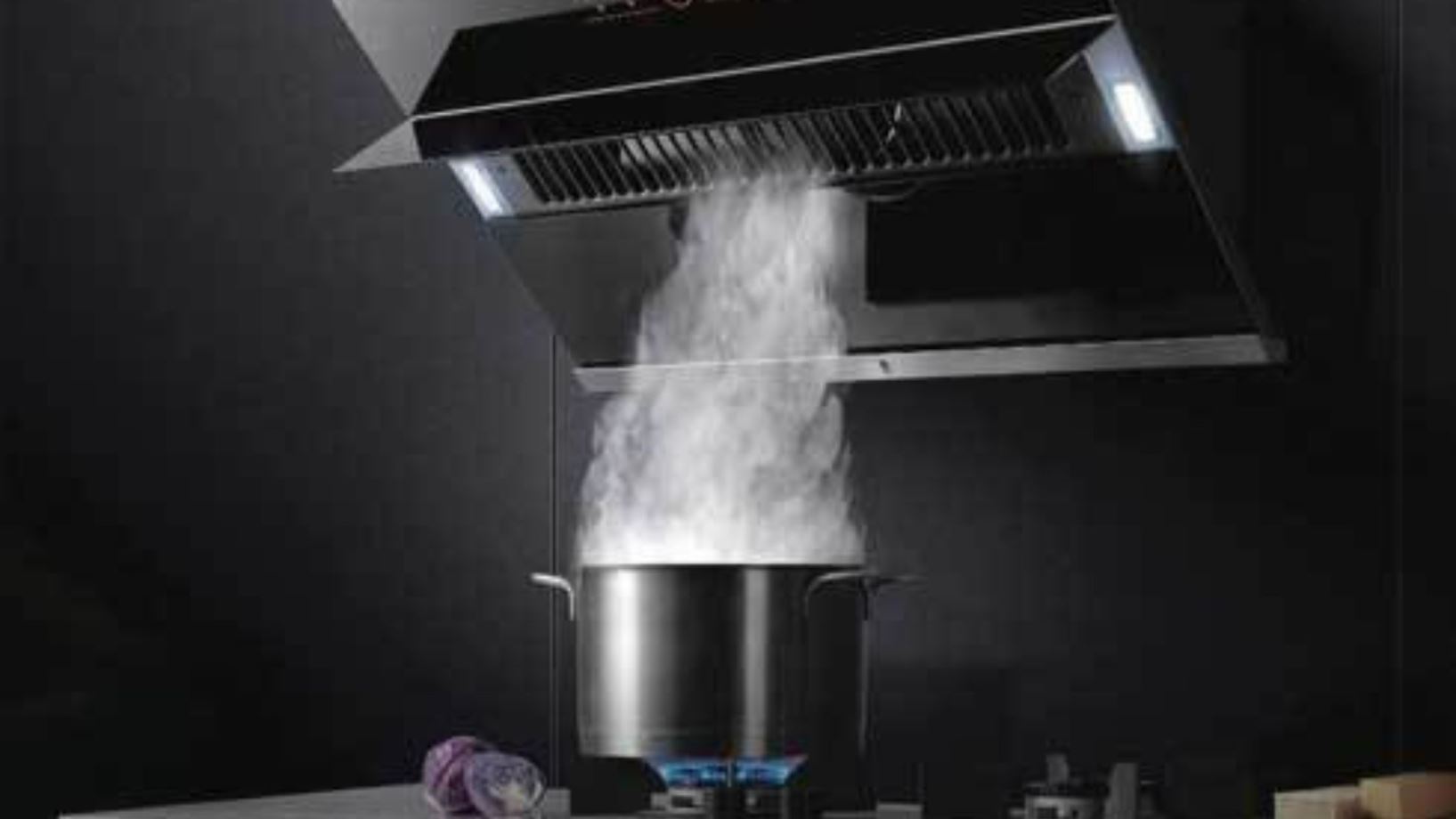
- An electrical chimney of a modular kitchen is divided into two parts; exhaust hood and air column.
- The exhaust hood is installed above the gas, and the air column connects the hood to the external surroundings.
- The hood of the chimney contains a trap mesh that captures the steam and smoke generated during the cooking process.
- Smoke and steam, trapped in the mesh, are pushed toward the filter.
- Chimneys contain a primary filter made with different materials, including an extra carbon mesh for ductless chimneys.
- This filter traps the oil molecules, greasy particles, and smoke.
- A rotating motor fan inside the exhaust, present right before the air duct starts, push the air into the duct.
- This process forces the hot air into the higher column for ventilation.
3. What are the benefits of kitchen chimneys?

- A person can comfortably cook inside the kitchen as it keeps the air clean by sucking in all the smoke, steam, oil particles, greasiness, and spicy exhaust.
- Bacteria and fungi grow uncontrollably when the kitchen atmosphere or surface is filled with heat, steam, food stains, and other types of dirt. Kitchen chimneys help control the growth of harmful micro-organisms by keeping the kitchen air and surface clean and cool.
- The inclusion of a kitchen chimney is not just about cleanliness or aesthetic appeal, it is about saving lives.
- It reduces the carbon monoxide level inside the kitchen.
- Kitchen chimneys protect kitchen walls and tiles. Materials like tiles, marble, and granite become coated with grime due to smoke and oil particles in the air. They can also deteriorate over time. Stainless steel, as raw material, resists damage due to stains, steam, and heat. But it is always better to include facilities that can reduce the maintenance requirements. In that way, a kitchen chimney is a crucial component of a low-maintenance kitchen.
- Installing an electric kitchen chimney will enhance the overall appearance. Kitchen chimneys' door panels are chosen based on the design and colour of the walls and other appliances.
4. What are the different types of kitchen chimneys for Indian kitchens?
1. Wall Mount - it is the type of kitchen chimney that is fitted against the wall and over the cooktop.
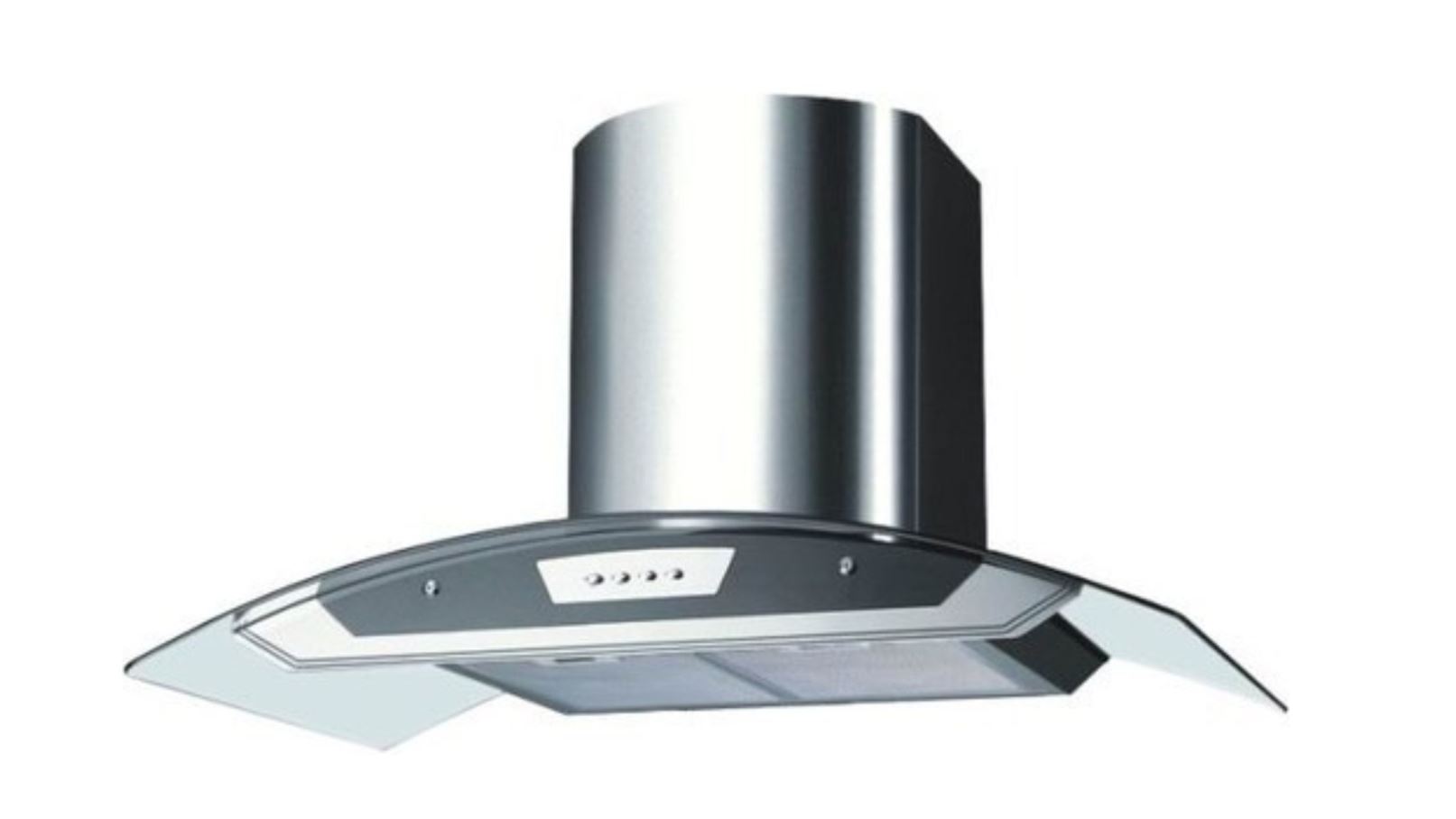
2. Built-in - It is a type of kitchen chimney integrated against the wall, fitted inside the cabinetry according to its design to conceal some of the unsightly portions.
Imagine looking at the beauty and then suddenly seeing the beast. If that is how you feel about ducts then a built-in chimney is the right option.
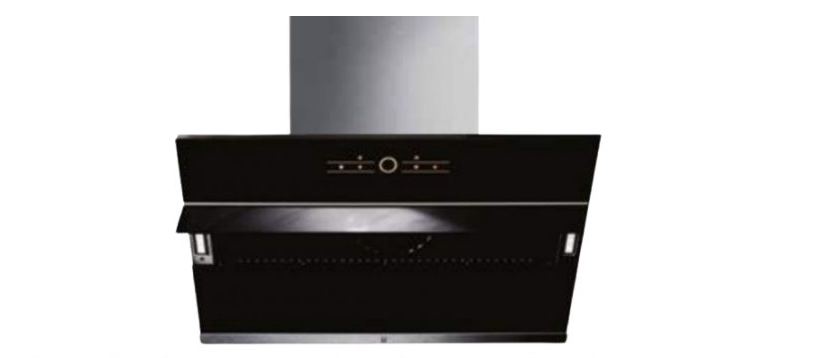
3. Island - As suggested in its name, an island chimney is built right above the kitchen island, hanging from the ceiling, with ducts and pipes required to exhaust smoke and fumes. An island chimney is recommended for an open kitchen with a stove platform away from the wall.

4. Downdraft - It is a type of chimney built into the kitchen countertop. It is brought out of the countertop with the simple push of a button. Downdraft chimneys have regulatory mechanisms that help in controlling fan speed.
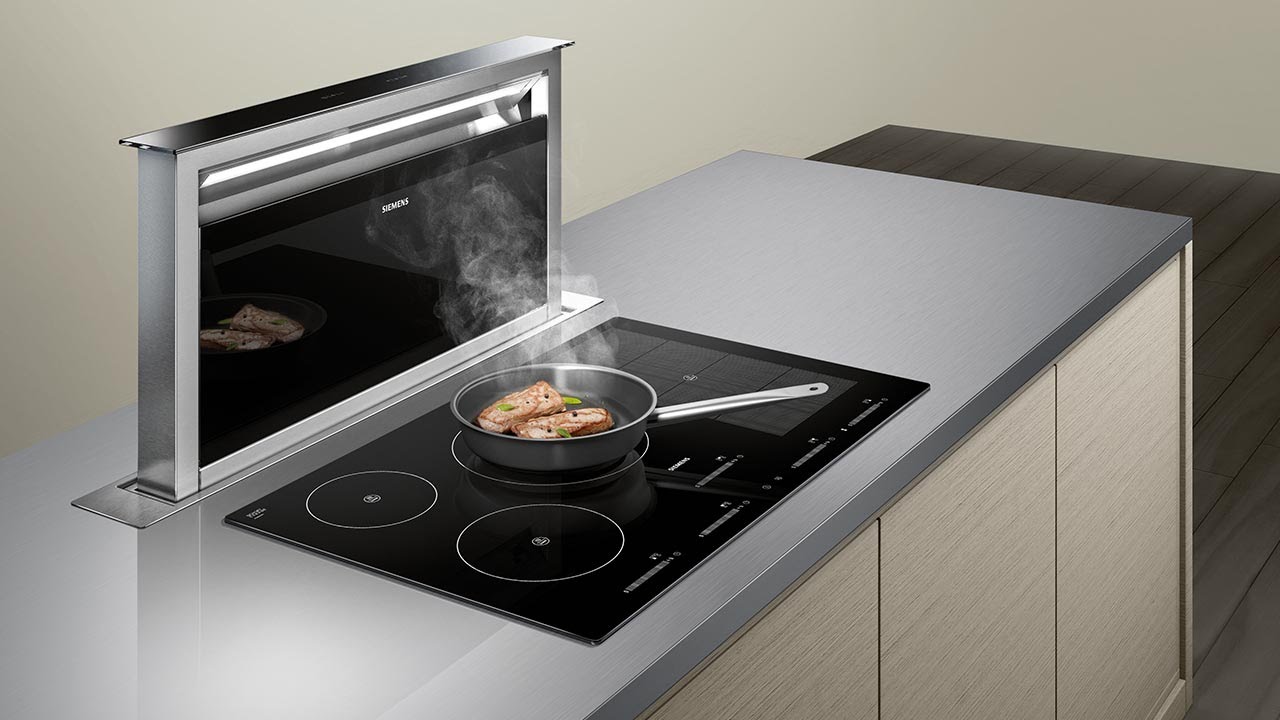
5. Telescopic - A telescopic chimney is a flat design almost invisible as it blends in seamlessly with the ceiling or cabinets. It leaves more space for dado accessories.
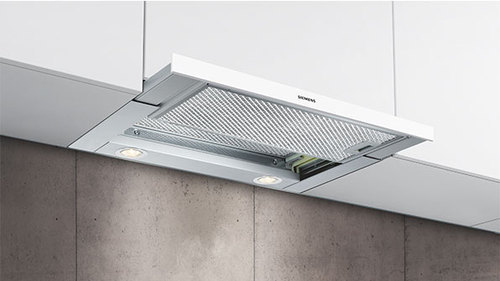
5. What are the prominent kitchen chimney brands?
- Siemens
- Gaggenau
- Bosch
- Faber
- Kaf
- Elica
- Glen
Also read: The Ultimate Guide to Indian Kitchen Sizes | Kitchen Ergonomics
6. Chimneys or exhaust fans, which is a better option?
Chimneys and exhaust fans work on the same principle of increasing ventilation inside the kitchen by removing heat and unpleasant odours. Exhaust fans remove heat and odours through their vents. Whereas chimneys, with the help of suction and motors, absorb excessive heat, unwanted smell, and grease.
However, the chimney is a better option for those kitchen spaces with very little ventilation, like in the cases of small apartments.
Do you need assistance in choosing the right kitchen chimney?
You can choose a suitable kitchen chimney design based on your kitchen’s area, height, layout, cabinet designs, and ventilation availability. Chimneys are installed directly over the cooktop. When it comes to island kitchens, an island chimney is built right above the cooktop, on the ceiling. Built-in chimneys are recommended for L-shaped or U-shaped kitchens if the homeowner wants to keep the chimney components concealed. Otherwise, wall-mounted chimneys are recommended.
Visit Kuche7's experience center and get all your concerns addressed. Kuche7 has been in the comprehensive Stainless Steel Interior Solutions business for years. The company has collaborated with various companies, like Kaff, Faber, Bosch, etc., to offer a variety of appliances and accessories.
Experts at Kuche7 can suggest a suitable kitchen chimney design based on your kitchen layout. You may book a visit to a Kuche7 experience centre near you to experience the modular kitchen first hand and appliances like kitchen chimneys.
Backed by a design philosophy rooted in strong moral codes, Kuche7 has embellished thousands of homes across India. As a company, Kuche7 focuses on customers' vision and transforms their ideas into reality with the help of talented designers, technology, and years of industry expertise.






